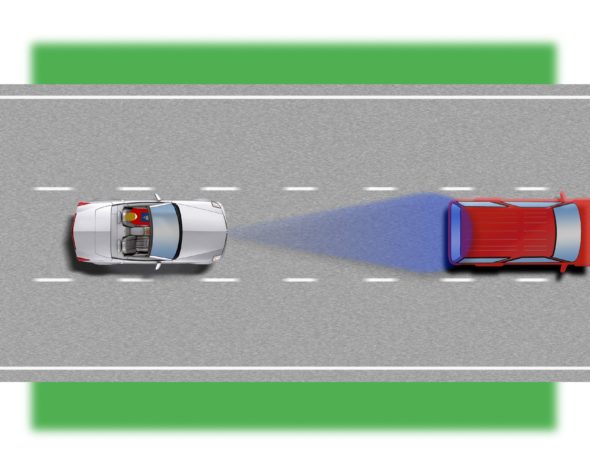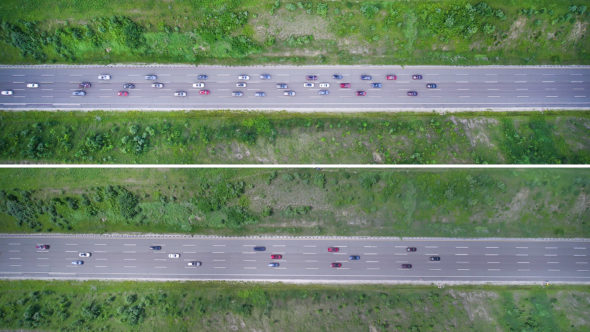 With 37.9 million vehicles registered for use on Britain’s roads it’s hardly surprising that traffic jams are commonplace. Indeed, research conducted by traffic information provider Inrix shows that in 2017 drivers in the UK spent an average of 31 hours in traffic jams during peak hours.
With 37.9 million vehicles registered for use on Britain’s roads it’s hardly surprising that traffic jams are commonplace. Indeed, research conducted by traffic information provider Inrix shows that in 2017 drivers in the UK spent an average of 31 hours in traffic jams during peak hours.
If a hold-up is due to an accident, or road works, or it’s simply rush hour, there’s not a great deal that can be done. But what about those all too familiar situations when you’re stationary for no apparent reason? These so-called ‘phantom traffic jams’ are caused by the chain reaction that results when lots of drivers in a row all tap their brakes, each a little harder than the last, until eventually traffic grinds to a halt.
There are many who believe that widespread use of adaptive cruise control (ACC) can be an effective way to combat these phantom traffic jams. The system, which is increasingly common on higher spec models of car, combines traditional cruise control with radar technology that monitors the gap to the car in front, and can adjust vehicle speed to hold a set distance. In doing so it helps to minimise those situations where sudden braking is required, the cause of which is often driver error such as following too closely or a momentary lapse of concentration.
 Ford wanted to see how effective this technology could be in preventing phantom traffic jams and so, alongside researchers from Vanderbilt University in Tennessee, USA, it conducted a study on closed roads.
Ford wanted to see how effective this technology could be in preventing phantom traffic jams and so, alongside researchers from Vanderbilt University in Tennessee, USA, it conducted a study on closed roads.
As the video below shows, the researchers first sent a convoy of 36 vehicles along a three-lane test track with no ACC in operation. All vehicles were travelling at 60mph, with the lead cars then reducing their speed to 40mph at a set point, mimicking the kind of scenario that would occur in the build-up to a phantom traffic jam. As you’d expect, in these conditions the drivers of the vehicles behind had to react, leading to what Ford describes as a ‘braking wave’ that became more pronounced towards the rear of the convoy. Throw in even more cars, as you’d find on a busy motorway, and the resultant hold-ups are inevitable.
The same experiment was then repeated only this time all but the three lead vehicles were using adaptive cruise control set to 62mph. With the same reduction in speed at the head of the convoy the systems were able to react quicker than a human driver, preventing the need for those at the back to brake significantly harder than those at the front, and thus keeping the traffic flowing. The overhead image, below, shows the difference in traffic flow between those cars not using ACC (top) and the same cars with the systems switched on (bottom).
 That’s all very well if every car has ACC (and uses it). However, with the technology only really becoming mainstream in recent years that’s an unrealistic prospect for the time being. Researchers therefore also tried the test with only 12 of the 36 cars using ACC, and found the results to be similar to when all cars were using it. Thus what the study suggests is that if 33% of vehicles on the road use adaptive cruise control it would help to drastically reduce the number of phantom traffic jams.
That’s all very well if every car has ACC (and uses it). However, with the technology only really becoming mainstream in recent years that’s an unrealistic prospect for the time being. Researchers therefore also tried the test with only 12 of the 36 cars using ACC, and found the results to be similar to when all cars were using it. Thus what the study suggests is that if 33% of vehicles on the road use adaptive cruise control it would help to drastically reduce the number of phantom traffic jams.
And so, while you could still pick holes in the methodology (for example, none of the vehicles were changing lanes, or joining or leaving the road as they would be in a real world scenario) it is still possible to see the potential benefits to traffic flow if a significant number of drivers use ACC. If that means fewer jams and less time sitting at a standstill you can count us in.
Find Used Cars in your area at CarGurus.
Shopping for a new vehicle?
Bring along CarGurus’ mobile app to help check prices, find good deals, and research cars on your smartphone.
The content above is for informational purposes only and should be independently verified. Please see our Terms of Use for more details.
Is This the Tech Set to End Phantom Traffic Jams? posted first on http://www.cargurus.com/blog/
No comments:
Post a Comment